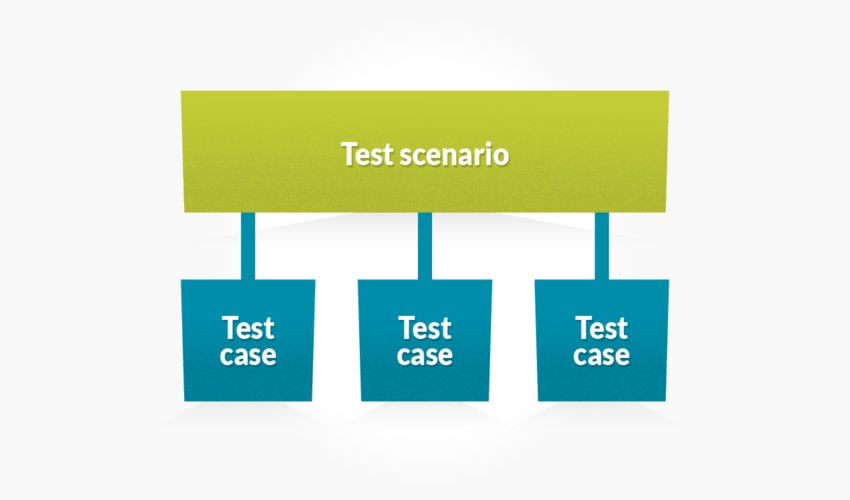
Test Case
A test case is a set of variables or conditions under which a tester will determine if a requirement upon an application is fully or partially satisfied. It is an input provided to test whether the functionality is working correctly or not.
Test Scenario
Test Scenario ensures correct end-to-end functioning or business process flows of the software. Testers are required to view situations from a user’s perspective and figure out the real-world scenarios or use cases which an end-user can perform on the software. Developers, stakeholders, and clients assist testers to create test scenarios.
Management of both test cases and test scenarios is of utmost importance, which is why Agile teams give a considerable amount of thought to acquiring a test case management software that doesn’t only manage test cases and scenarios but also other aspects of testing.
Difference Between The Two
- A test case consists of everything from a set of input values to executed postcondition while the test scenario is merely a test procedure.
- Test cases are derived from test scenarios whereas scenarios are derived from used cases.
- A test scenario is a series of actions that are associated together whereas a test case represents a single action by the user.
- Test cases are a set of inputs and outputs given to a system while the scenario is a thread of operations.
Components of a Test Case
- Test Suite ID
- Test Case ID
- Test Case Summary
- Related Requirement
- Prerequisites
- Test Procedure
- Test Data
- Expected Result
- Actual Result
- Status
- Remarks
- Created By
- Date of Creation
- Executed By
- Date of Execution
- Test Environment
Importance of Scenario Testing
As you may know, if the number of data combinations and possible paths in software is large, then exhaustive testing of any software application is not possible.
This is because your testing efforts are focused mainly on important areas and for that, you use techniques like risk-based testing, equivalence partitioning (EP), boundary value analysis (BVA), etc. However, these techniques still don’t guarantee a bug-free product.
Scenario testing helps you figure out the most important end-to-end transactions or the real use of the software applications, ensuring that the software works for the most common user scenarios. It can help find a lot of defects by using test case management software which can’t be found with other types of testing.
It’s also very significant for complex transactions and analyzing the end-to-end functioning of the program. Test cases are believed to be an integral part of the SDLC without which it can be hard to track, understand, and evaluate something. However, in the age of Agile, test scenarios are being preferred over test cases.
In scenario testing, test scenarios are created which replicate the usage of end-users. A test scenario can be a series of test cases that follow each other or merely an independent test case. Whereas the test scenario is just a story that explains the software’s usage by any end-user.
Tech World Times (TWT), a global collective focusing on the latest tech news and trends in blockchain, Fintech, Development & Testing, AI and Startups. If you are looking for the guest post then contact at techworldtimes@gmail.com

